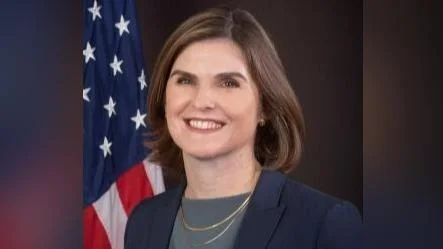The Catholic University of America in Washington has implemented a 7% workforce reduction as part of a financial restructuring effort to address a $30 million deficit. This decision comes amid declining enrollment revenue and rising costs.
University President Peter Kilpatrick, in a message dated May 19, announced the elimination of 66 active, full-time positions as part of the final phase of a "comprehensive financial resiliency plan" first introduced last fall. Kilpatrick stated that these cuts are expected to save approximately $9.7 million annually and were necessary for achieving a balanced budget for the current fiscal year.
Kilpatrick noted that the affected positions span various departments, primarily in administrative and operational areas less directly connected to the student experience. Karna Lozoya, vice president for university communications, confirmed that all terminated positions were administrative but did not specify which departments were impacted.
Lozoya reiterated Kilpatrick's message in an email on May 21, stating that it was impossible to reduce the operational budget by 10% without eliminating staff positions. Kilpatrick added that efforts were made to minimize impacts on student-facing roles by streamlining administrative functions and adjusting staffing where technology could improve efficiency.
The restructuring is described as comprehensive, with no further position eliminations anticipated. Affected staff will remain on paid leave through June 13 with full benefits and receive "comprehensive transition support," including two weeks of additional pay and a voluntary severance amount supported by donor contributions.
Six months of outplacement assistance will be provided, and released staff can apply for open positions at the university with full consideration. Staff with additional roles like summer lecturers can continue those positions.
The workforce reduction is part of multiple strategic components aimed at reducing about 10% of the university’s operating budget. Other strategies include trimming operational budgets across both administrative and academic units, scaling back planned salary increases from 4% to 2.5%, and reducing maximum retirement contributions from 10% to 7.5%. Qualified faculty will be offered voluntary separation packages.
To attract applicants, the tuition-dependent university plans to introduce new degrees such as bachelor’s and master’s degrees in artificial intelligence, an accelerated bachelor’s degree in nursing, a master’s degree in business administration, an online master’s degree in data analytics, and a master’s degree in evangelization and culture in partnership with the Word on Fire Institute led by Bishop Robert E. Barron.
Kilpatrick had previously highlighted challenges facing higher education due to rising costs and increased competition for students in an email to alumni dated December 6. He also mentioned COVID-19 impacts, inflation issues, and problems with the redesigned FAFSA form required for federal student aid applications.
These changes occur during challenging times for academia overall. In recent years several U.S. nonprofit colleges have closed due to financial difficulties attributed largely to waning enrollment trends exacerbated by fewer high school graduates enrolling in college upon graduation.
Gina Christian is a multimedia reporter for OSV News. Follow her on X @GinaJesseReina.
 Alerts Sign-up
Alerts Sign-up






